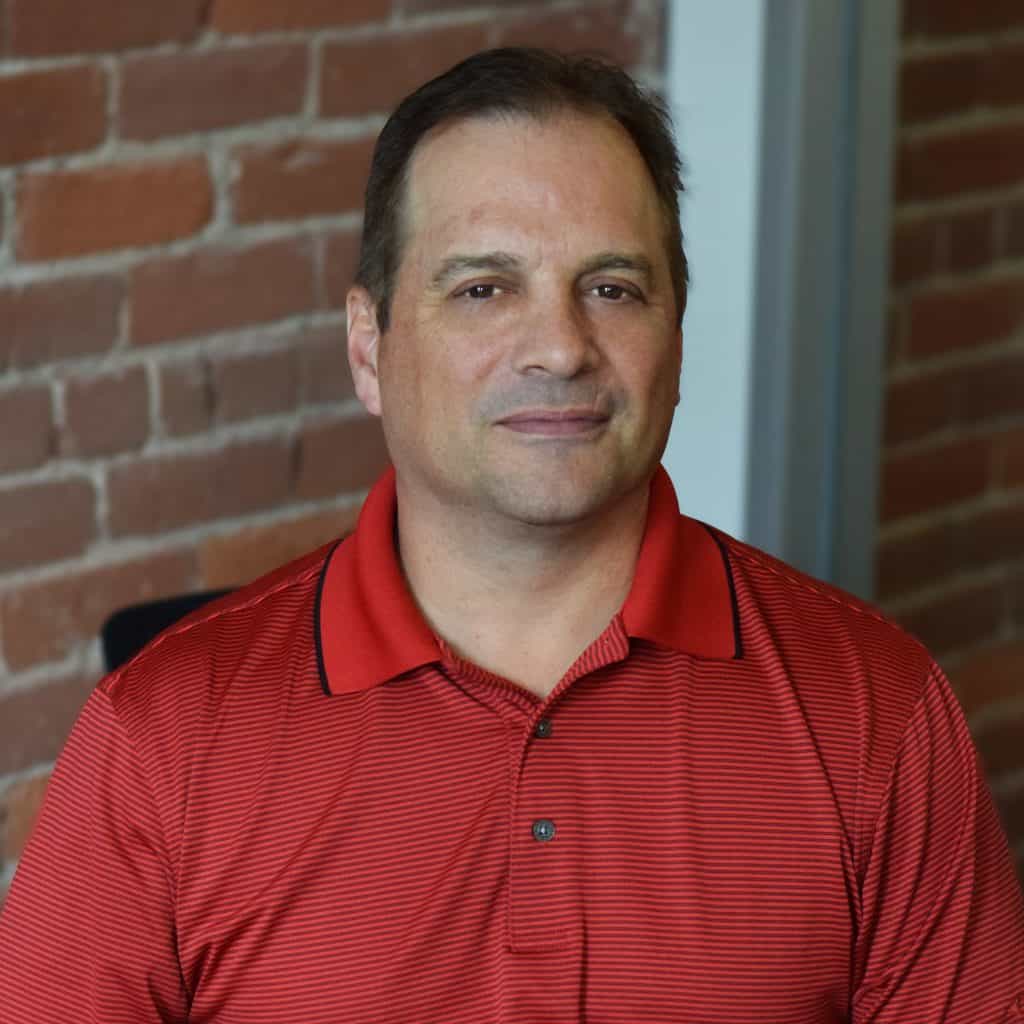AIOPs represents a mind shift from humans watching systems and reacting to one where the systems automatically alert the human to an issue and take corrective actions on their own.
There is an enormous and growing interest in the use of artificial intelligence in operations (AIOps). The reason: AIOps systems alert you when there’s something wrong, or even have the systems heal themselves. With such capabilities, companies can move from a reactive to a proactive stance, spotting problems in the making and preventing them from happening at all.
In this RTInsights Real-Time Talk podcast, Joe McKendrick, industry analyst at RTInsights and Mike Kavis, Chief Cloud Architect, Deloitte Consulting, discuss AIOps, real-time AI, analytics, and IoT trends that can provide significant value to businesses.
Listen to the podcast now:
Subscribe to Real-Time Talk on your favorite platform:
About Mike Kavis:

Mike is a chief cloud architect at Deloitte. Mike brings more than 30 years of experience in software development and architecture. Mike is the author of the Architecting the Cloud and is working on a new book focusing on operations in the cloud. A pioneer in cloud computing, Mike led a team that built the world’s first high-speed transaction network in Amazon’s public cloud and won the 2010 AWS Global Startup Challenge. Mike blogs and podcasts regularly on all things cloud.
Read the transcript:
Joe McKendrick: Hello, and welcome to the RTInsights Real-Time Talk podcast series. I’m Joe McKendrick, industry analyst at RTInsights, and your host for today’s discussion about real-time AI, analytics, IoT trends, and solutions that provide significant business value. I’m really pleased to be joined today by Mike Kavis, Chief Cloud Architect with Deloitte Consulting. Welcome, Mike.
Mike Kavis: Hey, good to hear from you again, Joe.
Joe: And folks, Mike is an industry veteran. There’s just no other way to put it. He’s an author, he published a book, “Architecting the Cloud,” which is a definitive work on how to construct and deploy a cloud solution across your enterprise. He’s a pioneer, as a matter of fact, in the cloud computing area. Way back before most people had actually heard of Amazon Web Services, when was it, 2010, Mike was active and had built the first networking solution that was built on top of Amazon’s public cloud. And he’s also written extensively about cloud Internet of Things, and now he’s doing a lot of work in the area of artificial intelligence. And Mike, a great place to start off, tell us about your work with AI and how did it get to this point? Tell us about your journey through the technology space.
Mike: Yeah, the journey spans 30 plus years. I started out as a COBOL developer using IMS and DB2 on the mainframe, and then got into the world of C and UNIX and then Windows and next thing you know, that’s where we met. We were talking about service-oriented architectures and got into the VPN stuff and then the cloud stuff, and I think the cloud stuff is where a lot of lightbulbs went on for me, because I actually left the corporate world and did a startup, and then I had to do every aspect of it. I had not just the development, but the operations part.
So over then when that business sold, I’ve been in consulting probably about the last seven, eight years helping companies with their cloud journey. And the way I got [into] the AIOps space is, again through my cloud journey, I kind of shifted from dev to ops and realized how hard it was to keep up with the distributed nature of cloud. There are all these servers coming and going, and we try to automate stuff, but we needed some kind of feedback and intelligence from the systems to tell us more, and that’s kind of led me to this AIOps space, which is a pretty fascinating space.
Joe: Yeah, tell us about AIOps. What is it? Tell us about the concept. You’re the thought leader in this area as well. You’re developing this concept, which is going to help companies embrace AI. Tell us a bit about how that works.
Mike: Yeah, I wouldn’t go as far as calling me a thought leader. I have thoughts. I don’t know if they’re leading. But AIOps, another buzzword, it means 70 things to 30 different people. But really this comes down to using intelligence to supplement or augment operations. And it doesn’t always have to be operations, but it’s using systems and machines and artificial intelligence machine learning bots or whatever, capabilities to help supply information to help solve a problem, and that problem could be operating the system or it could be as simple as when you’re in Gmail and you’re typing a search, it’s augmenting what it thinks the next thing could be for you. So it’s all that. I call it intelligence because there are so many tools in place, people get confused, but you’re just leveraging bots, you’re just leveraging artificial intelligence machine learning. There are all these things, so you just wrap it together and call it automation intelligence is what I call it.
Joe: And when you’re looking at AIOps, are you looking at employing AI to help IT departments build out these solutions, or are you looking at ways to move AI into the enterprise? Or is it a bit of both?
Mike: Well me personally, I’m attacking this from a cloud operation standpoint, so how do you run what you build? That doesn’t mean that’s the scope of AIOps, but that’s where my life is. And usually, it’s to inform or even automate operations, whether that’s giving operators intelligent decisions and let them decide, or sometimes even going a step further and automating a decision point for you. So for example, in the old days, we would have servers and we knew where they were and they were kind of fixed. In the cloud days, they spin up and they spin down and then sometimes we have it in multiple clouds, and it’s really too much for humans to keep tabs on in a real sufficient way unless you hire tons and tons of them, which no one wants to do. So you use these systems, these tools, to help supplement that and watch for you and look for trends.
And the other part of it is to be kind of proactive. Instead of waiting until all your alters are red and there’s a problem, it gives you information that says, “Hey, before this goes red, we think you should look at these types of things.”
Joe: Okay. And how could it help enterprises that are struggling with AI? How far along are enterprises with AI? Is this something that is still in the drawing boards and pilot stages? Are we seeing actual production-level work going on out there?
Mike: Well it’s a mixed bag, and if you’re talking about AI in general and not AIOps, there are financial institutions that are starting to take advantage, mostly at the entry-level of using artificial intelligence to look at information coming in and make decisions about stocks and bonds and market trends, or even a lot of companies are looking at social and their call center information and based on that, trying to better serve their customer or detect who the customer is and what they’re thinking, or what tier they’re at. So there’s a lot of that going on. I would say we’re pretty much in the early phases of that.
There’s a lot of vendors who are pretty advanced, adding this technology to their solutions, especially in the logging/monitoring space. But from AIOps, from using AI in operations, again, it’s early stages. Some companies are taking advantage of that mostly through the tooling they use. The logging software tools that offer that to them. But it’s early days on all this.
Joe: Sure, sure. And what are the challenges with bringing AIOps into your process? Where do you see the main obstacles and how can they be overcome?
Mike: It’s funny, I was thinking about this the other day. It’s the same obstacles when we went from the mainframe to the internet, from the internet to SOA, from SOA to cloud, from cloud to whatever. It’s the same thing. People in the process problems, it’s letting go, or not so much letting go, but thinking differently instead of bringing your old tools and processes to the right. You basically got to embrace new ways of thinking. Moving more towards proactive and letting systems alert you when there’s something wrong, or even letting systems self-heal, where we’re typically used to watching and then reacting. So a lot of it is a mind shift change. A lot of times people fear this like they fear a lot of other technologies. “Hey, I do that role and now you’re having machines do that.” So a lot of all those same things we see whenever a new technology is introduced.
Joe: Yeah. Yeah. Every couple of years we go through a new iteration, and lots of learning going on.
Mike: Well really what’s happening now is every few months. We went to mainframe to the internet, that was many, many years, then we went to C++ and all that. And then the cloud. But now it’s like every two months there’s something else, and there’s just so much change being thrown at us. It’s kind of crazy.
Joe: Yeah. Yeah. Everything is accelerating. And with AIOps, many people talk about having a so-called single pane of glass to monitor and manage all operations, all these things going on. When does that make sense in a hybrid cloud environment that a lot of companies are adopting these days?
Mike: Yeah, so I want to talk about a single pane of glass, and sometimes that pane is P-A-I-N. Right? The single-pane doesn’t have to be a single tool, and I think that’s where people get caught up. I just want one tool, and then they wind up grabbing a tool that’s supposed to be good for every, we have all this heterogeneous environment, all these different technology stacks from mainframe to client-server to cloud, to whatever, and we just want one tool. I take it more from the knock approach I want one wall with all my monitors so I can see everything, but it’s okay that all that information is coming from different places as long as I can see it in one place.
So if we talk about a single pane of glass in that aspect, it makes a lot of sense, especially when you get this hybrid environment and you have maybe a private cloud, or maybe even just on-prem systems running, and then you have maybe multiple public clouds. You don’t want to be logging in and out of 20 different vendor solutions. You just want to go to one place and see all these different dashboards on the wall. Otherwise, it’s just so complex and there are so many steps that it’s really hard to do your job. So I think a single pane of glass that’s made up of many views coming from many systems and many feeds makes a lot of sense. I think expecting a single tool to solve all your needs is probably not the way forward.
Joe: Exactly. Exactly. And Mike, when you talk about AIOps, I think about all the other ops that are very prominent these days, especially DevOps. That’s a huge trend we see out in the industry, the adoption of DevOps and kind of bringing teams in alignment and moving processes forward. Is AIOps, is that similar to DevOps? If you understand DevOps, is AIOps a natural progression of that, or does it differ from DevOps?
Mike: Yeah, so I have some very strong opinions on what DevOps is and what it isn’t. A lot of people associate DevOps with CI/CD, the build and deploy process, and I think that’s inaccurate. I think DevOps is much bigger than that, and DevOps is about how do we build software better, faster, more reliable through collaboration? And I think all these other names, DevSecOps, AIOps, all these other things are methods with inside that. So DevOps is really about how do we collaborate, work closer together, do system thinking and deliver a better product? AIOps is one way to do that. DevSecOps is an instrument of that.
Joe: Okay. Okay, and getting started with this, first of all, skills. What skills should people have or look to train themselves with to adopt AIOps?
Mike: Well again, if we’re thinking in the context of operating systems in the cloud or systems in general, if we stick to that, I think you’re looking more for the soft skills of system thinking capabilities, problem-solving capabilities, and in some cases even coding, scripting capabilities if you’re going to be building some of these solutions yourself, leveraging tools and scripts. But obviously you need the operations background or at least some aspect of it, but it comes down to the way you think, the way you solve problems. You need to be a good collaborator, those types of things. I think just a lot of soft skills. Unless you’re building the AIOps tools, so that’s a whole different ballgame.
Joe: And going back to what you said earlier, it’s the people and process problems that need to be addressed. It sounds like the skills that really can make a difference are the ability to address people and process. That’s always the way we need to go here.
Mike: Well a lot of problem-solving capabilities too. When the system tells you, “Hey, this looks like a trend, you should do this.” It’s like in the field of medicine if the thing comes up and says, “We think you should make a cut in the person here.” You really want to doctor to be able to interpret that and say, “Is that really the best decision?” The system is taking its best guess at it, but do we really need to do that? And it’s the same thing here with AIOps. When it’s supplementing you with information, you need that ability and that experience to determine is that the right path or should I do something slightly different or should I ignore that? So you just don’t want to sit there and let the system do it for you.
Now there are times where there are totally augmented solutions. Like if you look at driving cars, there are no humans involved. Fully autonomous, right? Fully autonomous. A lot of times it’s augmented. It’s like, “We’ve done some things for you, here are some decision points, and we’re going to give you the information to make the best decision.” So people need to be able to do that critical thinking and bring that experience in that domain that they’re working in, make those decisions.
Joe: Okay, great. Great. Mike, this has been fantastic, and let’s wrap it up here. Let’s tell our audience how should they get started on the AIOps journey? Is it something their vendors could help them with? Should they look to their vendors, their cloud providers, what’s the way they get started on the journey and who should lead that initiative?
Mike: Well you remember in the SOA days, we talked about VDA, vendor-driven architecture. Remember that?
Joe: Yes.
Mike: So there’s a lot of learning you can get from the vendors, but I caution, because at the end of the day, they’re trying to sell you something, and I’ve seen a lot of people purchase a tool that they’re in no way ready to consume in any manner, so now they spend hundreds of millions of dollars and it just sits there because they’re not ready as an organization to do this stuff. So vendors have a lot of great information that describes what AIOps is but look at the companies that are leveraging it. You can always look at thought leaders, but be careful there because a lot of the thought leaders are also either a vendor themselves or a partner of a vendor. I like to look at some of these conferences, like DeliveryComp and SREcon where you’re listening to practitioners who are actually doing these things, and a lot of them were early, so they built these things before the tools were there. Those are the people I learn from the most.
Joe: Fantastic. That’s great advice. And again, I want to thank Mike Kavis, Chief Cloud Architect at Deloitte Consulting for joining us. This is Joe McKendrick with Real-Time Talk for RTInsights and thank you for joining us today. Thank you, Mike.
Mike: I enjoyed it.






























